 W
WAggie Mack was a newspaper comic strip about a teenage girl. Created by Hal Rasmusson, it was distributed by the Chicago Tribune Syndicate beginning on September 2, 1946, and concluding on January 9, 1972. It had a 26-year run, with a title change to Aggie during the final six years.
 W
WArchie is an ongoing comic book series featuring the Archie Comics character Archie Andrews. The character first appeared in Pep Comics #22. Archie proved to be popular enough to warrant his own self-titled ongoing comic book series which began publication in the winter of 1942 and ran until June 2015. A second series began publication in July 2015, featuring a reboot of the Archie universe with a new character design aesthetic and a more mature story format and scripting, aimed for older, contemporary teenage and young adult readers. The printed comic book format is different from the previous publications.
 W
WArchie and Me was a comic book title published by Archie comics from 1964 to 1987. Most issues and covers focused on the interaction of Archie Andrews and the school principal, Mr. Weatherbee. This suggests that Mr. Weatherbee is the "Me" mentioned in the title, whereas the "Me" in Reggie and Me and Betty and Me appeared to refer to Archie Andrews himself.
 W
WArchie at Riverdale High was a comic book title published by Archie Comics from August 1972 to February 1987, focusing on the Archie gang's day to day exploits at Riverdale High School.
 W
WArchie Giant Series was a comic book title published by Archie Comics from 1954 to 1992. The book featured an ever revolving subtitle. It began in 1954 as Archie's Christmas Stocking, and continued with this title for six issues. Although the Christmas Stocking title appeared again in later issues, the book began to feature a number of different titles, each with the cover heading Archie Giant Series. Titles included World of Archie, World of Jughead, Katy Keene, Betty and Veronica Summer Spectacular, Sabrina's Christmas Magic and many others. One additional interesting item about this title is that it twice skipped in its numbering. Numbering continued up to #35, then skipped to #136. Again after reaching #251, the title skipped to #452. It became a regular 32-page book in the mid-1970s while still keeping "Giant" in the title. Finally the title ended in 1992 with #632 and was replaced with quarterly books Archie and Friends, Betty and Veronica Spectacular, and World of Archie.
 W
WArchie's Pals 'n' Gals was an ongoing comic book series published by Archie Comics featuring Archie and his friends. It originally ran from 1952 to 1991. The title showcased other members of the Archie gang, such as Betty and Veronica, Jughead and Reggie. It was later brought back in the form of a digest magazine in 1992.
 W
WArchie's TV Laugh-Out was a comic book published by Archie Comics from 1969 to 1986. Sabrina the Teenage Witch appears in all 106 issues, and this title served as a transition for her from Archie's Mad House to her own title. The first issue introduced Sabrina's boyfriend, Harvey Kinkle.
 W
WArquibaldo e sua Turma was a comic book, released in 1975 by Brazilian publisher Vecchi. The comic book published stories of titles already released by Archie Comics, such as Archie, Archie and Me, Archie's Girls Betty and Veronica, Archie's TV Laugh-Out, Reggie and Me, Sabrina, the Teenage Witch and others. It was the second publication of comics with licensed characters from Archie Comics in Brazil, the first was between 1954–1955, by Orbis, titled Frajola, which has 23 issues published. Arquibaldo e sua Turma have only 11 issues published, being the shortest publication in the country. First published May 1975 and last published December 1976.
 W
WBetty and Veronica was an ongoing comic book series published by Archie Comics focusing on "best friends and worst enemies" Betty Cooper and Veronica Lodge. Betty first appeared in Pep Comics #22 while Veronica made her debut a few months later, in Pep Comics #26, as an immediate rival to Betty for Archie's affections. Together the pair form the female part of the classic love triangle which has become a staple of the comic series since 1942.
 W
WBlue Monday is a comic book series created, written and illustrated by Chynna Clugston Flores. The series follows the adventures of Bleu L. Finnegan and her friends as they attend high school during the early 1990s, specifically between the years 1991–93.
 W
WBONZZO The Comic Strip is a comic strip created by John Rivas.
 W
WEtta Kett is a long-running comic strip created by Paul Robinson, which ran from December 7, 1925 to November 9, 1974.
 W
WEverything's Archie was a comic book published by Archie Comics from 1969 to 1991. The title served as a vehicle for showcasing the newly created Archie band The Archies, which was featured in the Archie TV cartoon series of the late 1960s and early 1970s. The series follows the exploits of the Archie band, as they meet record execs, play gigs, etc. Like Betty and Veronica Summer Fun and World of Archie, it was part of the Archie Giant Series. Everything's Archie was cancelled because the Archies were fading at the character's 50th anniversary. The company was also readying up for series such as Betty, Veronica, Jughead's Time Police, Archie 3000, and the Archie Americana Series.
 W
WFreckles and his Friends is an American comic strip set in the peaceful small town of Shadyside where young Freckles McGoosey and his friends lived. Although the long-running strip, created by Merrill Blosser, is remembered for its continuing storyline involving a group of teenagers, it originally featured a child at the age of six or seven in gag-a-day situations.
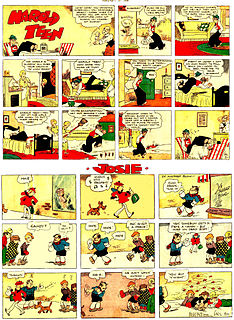 W
WHarold Teen is a discontinued, long-running American comic strip written and drawn by Carl Ed. Publisher Joseph Medill Patterson may have suggested and certainly approved the strip's concept, loosely based on Booth Tarkington's successful novel Seventeen. The strip ran from 1919 to 1959. Asked in the late 1930s why he had started the strip, Ed answered, "Twenty years ago, there was no comic strip on adolescence. I thought every well-balanced comic sheet should have one."
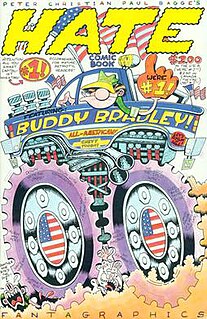 W
WHate is a comic book by writer-artist Peter Bagge. First published by Fantagraphics in 1990 it ran for 30 issues, and was one of the best-selling alternative comics of the 1990s, at its height selling 30,000 copies an issue. In 2000 Bagge revived the series in Hate Annual, a yearly comic that continues the story after Hate in short stories, and includes writings on libertarianism, culture, and topical cartoons.
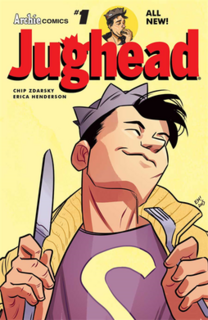 W
WJughead is an ongoing comic book series featuring the Archie Comics character of the same name. The character first appeared in Pep Comics #22. Jughead proved to be popular enough to warrant his own self-titled ongoing comic book series which began publication in January 1949.
 W
WJughead's Double Digest is an American comic digest magazine published by Archie Comics. It began as a companion publication to the Jughead 32-page comic book and Jughead With Archie Digest magazine.
 W
WLaugh Comics was a comic book produced by Archie Comics in two volumes, from 1946 to 1987 and 1987 to 1991. The title showcased some of the early appearances of the "Archie gang." Beginning with issue #145, Josie began making semi-regular appearances, with art by Dan DeCarlo.
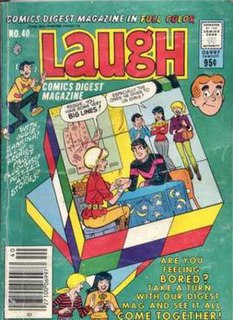 W
WLaugh Comics Digest was a publication of Archie Comics that lasted for 200 issues from August 1974 through April 2005. The title was noteworthy because it was not restricted to any character—it often included reprints of stories featuring the popular spinoff character Sabrina, the Teenage Witch, as well as That Wilkin Boy and Super Duck, and sometimes even included reprints from the very obscure title Cosmo the Merry Martian.
 W
WLife with Archie is a comic book published by Archie comics from 1958 to 1991. It featured Archie Andrews in adventure stories that were more dramatic than the standard Archie tales. In 2010, it was revived as a magazine-sized comic devoted to stories that grew out of Archie Marries Veronica/Archie Marries Betty. Archie's character was killed in the second to last issue, Life with Archie #36.
 W
WPenny was a comic strip about a teenage girl by Harry Haenigsen which maintained its popularity for almost three decades. It was distributed by the New York Herald Tribune Syndicate from June 27, 1943 to October 25, 1970.
 W
WSabrina the Teenage Witch is a comic book series published by Archie Comics about the adventures of a fictional American teenager named Sabrina Spellman. Sabrina was created by writer George Gladir and artist Dan DeCarlo, and first appeared in Archie's Madhouse #22. Storylines of the character at elementary-school-age also appear under the title "Sabrina -- That Cute Little Witch" in almost all of the Little Archie comics.
 W
WSwitch Girl!! is a Japanese teen comedy shōjo manga series with story and art by Natsumi Aida. It was serialized on Margaret by Shueisha.
 W
WTeena is a comic strip about a teenage girl, created by Hilda Terry. It ran from July 1, 1944 to 1963, distributed by King Features Syndicate.
 W
WTina's Pals is a Brazilian comic strip series, part of the Monica's Gang series, created in 1970. The stories are aimed at a more teenage group of readers, rather than the kids who would read other Mauricio de Sousa's works and thus center around teenagers. However, Mauricio prefers not to mention drugs, sex, alcoholic drinks, or other similar subjects, which are very popular among teenagers. Instead, the strips are written with themes related to school or university, dating, problems with parents, etc.
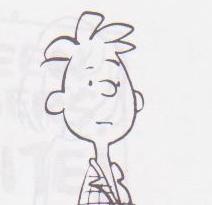 W
WYoung Pillars is a single-panel gag strip written and drawn by Charles M. Schulz from 1956 to 1965 for the Youth Magazine published by the Church of God. The comic featured teenagers, most notably "Harold", and most were religiously themed.
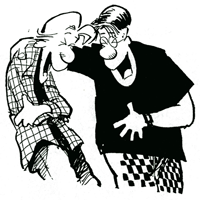 W
WZits is a comic strip written by cartoonist Jerry Scott and illustrated by Jim Borgman about the life of Jeremy Duncan, a 16-year-old high school sophomore. The comic debuted in July 1997 in over 200 newspapers and has since become popular worldwide and received multiple awards. As of 2010, it continues to be syndicated by King Features and is now included in "more than 1,700 newspapers worldwide in 45 countries and is translated into 15 different languages."